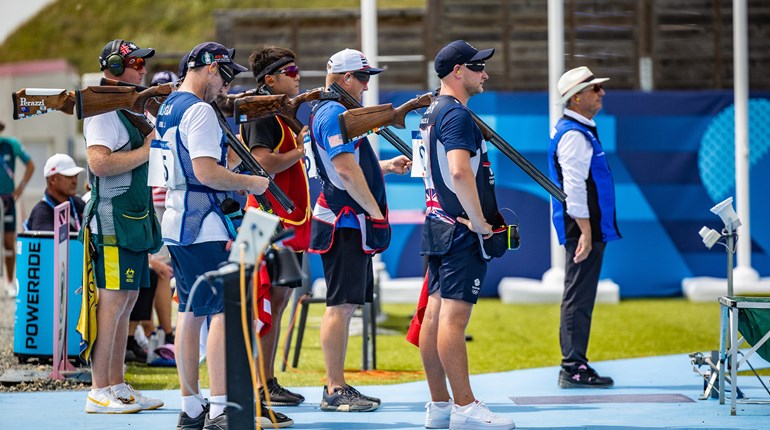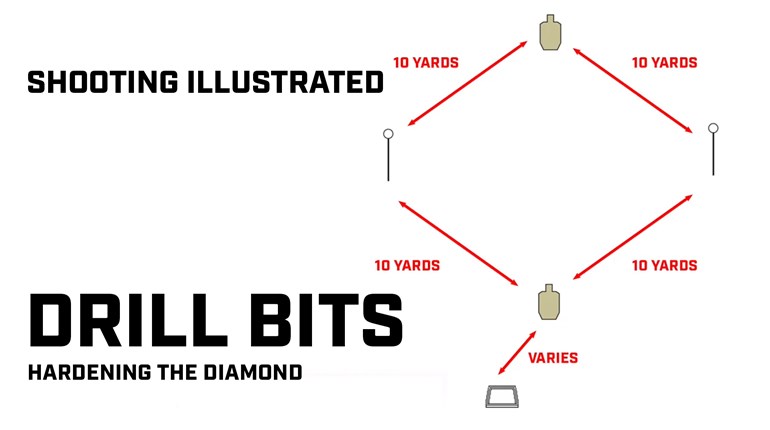
It’s not unusual for a rifle scope to run out of elevation adjustment when shooting at extended ranges, especially while stretching the legs of a .22 LR rifle. An option to avoid buying a more expensive optic or aftermarket “MOA rail” is to raise the back end of the scope with shims.
Imagine a rifle with a scope mounted on a Picatinny rail or other one-piece base and zeroed at 100 yards. Placing a shim under the rear of the rail tips the front of the scope downward, requiring the shooter to raise the muzzle to get the scope reticle back on the 100-yard target. Now, of course, the bullet will impact higher, so the rifle’s zero has moved somewhere beyond 100 yards. What we have done in shimming the rear of the scope rail is to essentially add inherent elevation to the scope without need to adjust the scope’s elevation turret. But how much elevation have we added?

Factory “MOA rails” can be purchased aftermarket and are pretty much standardized as 10-MOA, 20-MOA or 30-MOA rails—the amount by which they raise bullet impacts from a level zero. One MOA (minute of angle) is equivalent to 1.047 inches at 100 yards, typically rounded off as one MOA equals one inch at 100 yards. These MOA rails are manufactured with the back end of the rail taller than the front. The cost of factory MOA rails starts at around $30 and goes up from there. Shims, however, cost only pennies, allow customizing rail height to whatever is desired, and are simple to fabricate at home.

Knowing how much a shim will raise bullet impact can be estimated with simple math.
DO THE MATH
First, measure the distance between your scope rings in inches. Multiply that by two, then multiply that answer by 3.14159 (pi, or π), divide by 360 (degrees) and divide again by 60 (arcminutes). The result is shim thickness in inches-per-one-MOA. For example, the scope rings on my Ruger-Kidd 10/22 are three inches apart, so:
- Step 1: 3 x 2 = 6
- Step 2: 6 x pi (3.14159) = 18.84954
- Step 3: 18.84954 ÷ 360 = 0.05235
- Step 4: 0.05235 ÷ 60 = 0.00087
Therefore, a shim with a thickness of 0.00087 inch under the rear of the rail or base will raise bullet impact about one MOA. To raise bullet impact 20 MOA requires a shim of about 0.0174-inch thickness (0.00087 x 20 = 0.0174). Steel shims, shim kits and shim stock are available from Brownells.

An alternative to steel is brass shim stock which, similar to steel shim stock, is readily found online and works well for the purpose here. Brass, of course, is easier to cut and drill than steel when fabricating shims. Note that thin brass and even the thinnest steel stock can be cut with scissors, and several cut pieces can be stacked to achieve the desired thickness.
Both steel and brass shim stock are supplied in sheets or rolls a few inches wide and of specific thickness, such 0.010 inch or 0.002-inch thick; once you’ve done your calculation, you can order accordingly. Rounding the aforementioned 0.0174 inch to 0.017 or 0.018 is acceptable.
DRILL AND CUT
Fabrication is simple. Place the rail or base directly on the shim stock, insert a pointed punch (an ordinary scribe can work for this) through the mounting hole and press a dimple onto the shim stock. Using the sharp tip of the scribe, score the shim stock around the edge of the rail or base; this will mark where you will later cut the material to fit it. It is easier to drill the shim stock before cutting it to size, as it provides more material to handle while working with it. Clamp the shim stock to a piece of wood and drill the holes through the dimples, applying light pressure so that the drill cuts rather than punches through. Flip the shim stock over and dress the hole edges with a Swiss (fine) file, if necessary, to remove extraneous material. Now cut the shim along the scoring to fit, and install.

If you elected to take the shortcut of punching rather than drilling the mounting holes through the shim stock, you will find the shim material “funneled” around the back side of the hole, which can prevent the shim lying flat between the rifle receiver and rail or base. Drilling is the best way to go. Know also that that the thickness of the shim may or may not require using slightly longer rail or base mount screws, which are available from Brownells.
SHIMMING A TWO-PIECE BASE
Note that shimming a Picatinny rail or other single-piece base is one thing, but shimming the rear base of a two-piece mount will place some bending stress on a scope tube because the rings will no longer be level with each other. Scope manufacturers discourage the practice because it may interfere with internal adjustment movement and could even cause internal damage.

When shimming, it’s better done to a single-piece rail or base. If two-piece bases must be used, then after shimming the separate rear base, mount the scope using Burris Signature rings with Pos-Align inserts, which can compensate for the height difference between rings without stressing the scope tube.



































